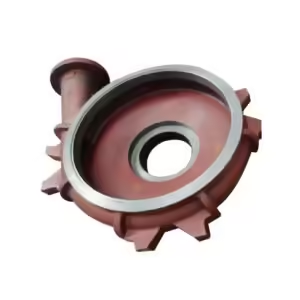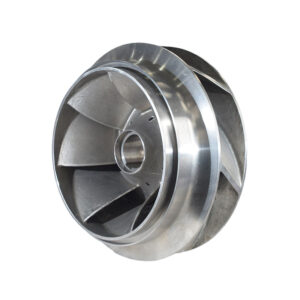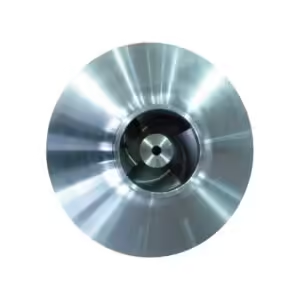4 نصائح لصيانة أجزاء صب مضخة مياه الآبار الحرجة
مرحباً بكم في مدونتي!
يسعدني وجودك هنا! قبل أن نتعمق في المحتوى، أود أن تنضموا إليّ على منصات التواصل الاجتماعي. هناك أشارككم أفكارًا إضافية، وأتواصل مع مجتمعنا الرائع، وأُطلعكم على آخر الأخبار. إليكم كيفية البقاء على تواصل:
📘 فيسبوك: شركة شنغهاي لييروو الصناعية التجارية المحدودة
الآن، لننطلق في هذه الرحلة معًا! آمل أن تجدوا هذا المحتوى مفيدًا ومُلهمًا وقيّمًا. هيا بنا!
جدول المحتويات
مقدمة
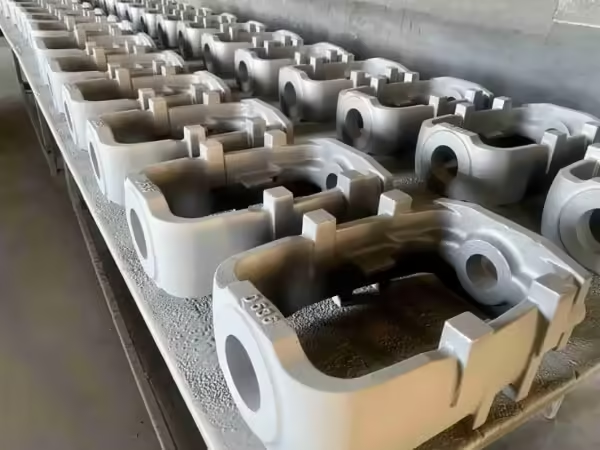
Well water pump systems are integral to many residential, agricultural, and industrial applications. The longevity and efficiency of these systems heavily rely on the performance of the pump and its casting parts. The casting parts are key components in a well water pump, responsible for ensuring smooth operation and preventing failures that could lead to expensive repairs or system downtime.
In this guide, we will explore 4 critical maintenance tips for well water pump casting parts, focusing on how to optimize their performance, prevent wear and tear, and ultimately extend the lifespan of your well water pump system. Proper maintenance is essential for keeping your pump running efficiently, saving on repair costs, and ensuring clean water flow when needed.
Tip 1. Regular Inspection of Well Water Pump Casting Parts
Importance of Regular Inspections
Regular inspection of your well water pump’s casting parts is essential for early identification of potential issues that could lead to major breakdowns or costly repairs. Well-maintained pumps operate more efficiently, providing a consistent and reliable water flow. In contrast, neglected components can cause a decrease in pump performance, energy efficiency, and water flow capacity.
Routine checks allow you to detect problems such as wear, cracks, corrosion, or misalignment before they escalate into significant damage. This early intervention can save you time and money, helping you avoid major repairs or pump replacements.
Key Areas to Inspect
When inspecting your well water pump, focus on the following critical casting parts:
- Pump housing: Check for cracks, corrosion, and loose bolts.
- المكرهة: Inspect for signs of wear or buildup of debris, which could hinder pump performance.
- Suction pipe and valve: Ensure they are free from blockages and cracks.
- Motor housing: Look for signs of overheating, oil leaks, or electrical issues.
Inspection Frequency
You should inspect your well water pump at least once every 6 months, particularly in regions with harsh weather conditions or where the pump operates frequently. If you notice any irregularities or performance issues, it’s crucial to address them immediately to avoid more extensive damage.
Tip 2. Proper Lubrication of Well Water Pump Casting Parts
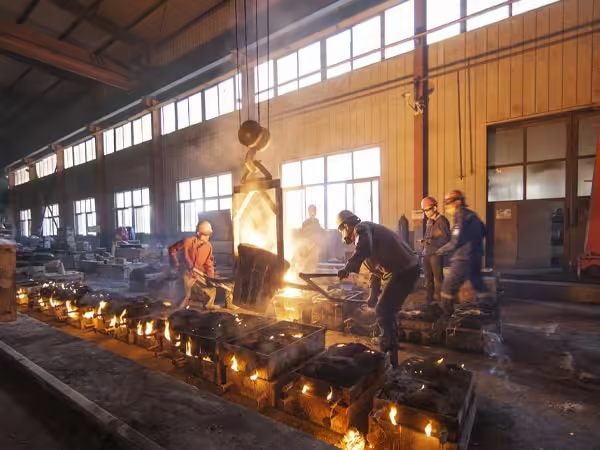
Importance of Lubrication
Lubrication plays a vital role in the smooth functioning of your well water pump. It reduces friction between moving parts, such as the motor shaft, bearings, and impeller, which is crucial for preventing premature wear and tear. Without proper lubrication, these components can heat up due to excessive friction, which can lead to overheating and eventual failure of key casting parts. By maintaining proper lubrication, you ensure that these components remain in optimal working condition for extended periods.
Best Lubricants for أجزاء صب مضخة المياه
Use only lubricants recommended by the manufacturer for well water pump casting parts. This ensures compatibility and prevents damage. Common lubricants for these systems include:
- Lithium-based grease: Ideal for metal parts that need a long-lasting lubrication.
- Synthetic oils: These are effective for high-temperature and high-stress applications.
- Food-grade lubricants: For pumps used in water systems intended for human consumption, ensuring safety and hygiene.
Lubrication Schedule
Follow the manufacturer’s guidelines on lubrication intervals, but typically, it is recommended to lubricate well water pump casting parts every 1,000 to 1,500 operational hours. If your pump is used in a high-load environment or exposed to harsh conditions such as dust or debris, more frequent lubrication may be required. Regular checks should be made to ensure that lubricant levels are sufficient, and if necessary, top up or replace the lubricant to prevent any performance degradation.
Tip 3. Preventive Maintenance for Corrosion Control

Why Corrosion is a Threat to Well Water Pump Casting Parts
Corrosion is one of the most significant threats to the durability of well water pump casting parts. It occurs when the pump parts, particularly those made of steel or cast iron, come into contact with water, minerals, and chemicals present in the well. Over time, corrosion weakens the metal, making it more prone to cracking, breaking, or reducing its strength.
Corrosion can also affect the pump’s efficiency, causing blockages in pipes, reduced water flow, and increased energy consumption. If left unchecked, it may eventually lead to the complete failure of key pump components, requiring expensive repairs or replacements.
Methods to Prevent Corrosion
To prevent corrosion from affecting your well water pump casting parts, consider the following strategies:
- Protective coatings: Apply corrosion-resistant coatings to your pump’s metallic parts. Options include epoxy coatings or galvanizing, which can create a barrier between the metal and corrosive elements.
- Cathodic protection: This method involves using sacrificial anodes (usually zinc or magnesium) to protect the pump housing and impeller from corrosion.
- Water treatment: Ensure your well water is properly treated to reduce the mineral content that may cause corrosion.
Regular Cleaning and Maintenance
Cleaning your well water pump regularly helps remove dirt, debris, and minerals that may accelerate corrosion. Consider using non-corrosive cleaning agents to maintain the integrity of the casting parts.
Tip 4. Correct Alignment and Tightening of Well Water Pump Casting Parts
The Importance of Proper Alignment
Misalignment of the pump shaft, impeller, and other casting components can cause undue stress on the parts, leading to wear, vibrations, and even premature failure. Proper alignment ensures that the pump operates smoothly and that the casting parts are subjected to minimal stress.
How to Align Well Water Pump Casting Parts
Alignment should be checked during routine maintenance, particularly if you notice unusual noises or vibrations. Steps include:
- Check shaft alignment: Ensure the motor shaft and pump shaft are perfectly aligned.
- Tighten bolts and screws: Loose bolts can lead to misalignment, causing parts to rub against each other and wear out quickly.
Tightening Specifications
Follow the manufacturer’s torque specifications for tightening bolts and screws. Over-tightening can cause stress fractures, while under-tightening can lead to vibration and part loosening. Always use calibrated tools to ensure accuracy.
Table: Maintenance Schedule for Well Water Pump Casting Parts
| Maintenance Task | تكرار | Recommended Action |
|---|---|---|
| Inspection of Pump Components | Every 6 months | Inspect for wear, cracks, or corrosion |
| Lubrication of Moving Parts | Every 1,000-1,500 hours | Use recommended lubricant and reapply as needed |
| Corrosion Control (Coating & Protection) | Annually | Apply protective coatings and sacrificial anodes |
| Alignment and Tightening of Parts | Every 6 months or as needed | Check alignment, tighten bolts to specification |
خاتمة
Maintaining well water pump casting parts is essential for ensuring your water pump operates efficiently and reliably. By following these 4 critical maintenance tips, including regular inspections, proper lubrication, corrosion control, and alignment, you can extend the lifespan of your well water pump and avoid expensive repairs. Regular maintenance will not only enhance the performance of your pump but also provide peace of mind knowing your water system is operating at its best.
الأسئلة الشائعة
How do I know when to replace my well water pump casting parts?
If you notice significant wear, cracks, or corrosion that can’t be repaired, it may be time to replace the affected casting parts. Regular inspections can help identify these issues early.
Can I perform maintenance on my well water pump casting parts myself?
Basic maintenance tasks such as inspection, cleaning, and lubrication can typically be done by homeowners. However, for more complex tasks like alignment adjustments or corrosion protection, it’s recommended to consult a professional.
What happens if I neglect maintenance on my well water pump casting parts?
Neglecting maintenance can lead to premature wear and failure of the pump. This could result in costly repairs, decreased efficiency, and even pump replacement.
How often should I clean the well water pump casting parts?
Cleaning should be done at least once a year, or more frequently if the pump is used in areas with high mineral content or harsh conditions.
فئات المنتجات
- أجزاء الصمامات
- أجزاء مضخة المياه
- أجزاء صندوق المحمل
- أجزاء الصب بالقالب
- منتجات مضخات الفولاذ المقاوم للصدأ
- منتجات مضخات الحديد الزهر
- قطع غيار الصمامات لاستخدام السيارات
- قطع غيار السيارات
- أجزاء الصمامات للاستخدام المدني
- قطع غيار مضخة التفريغ KF


